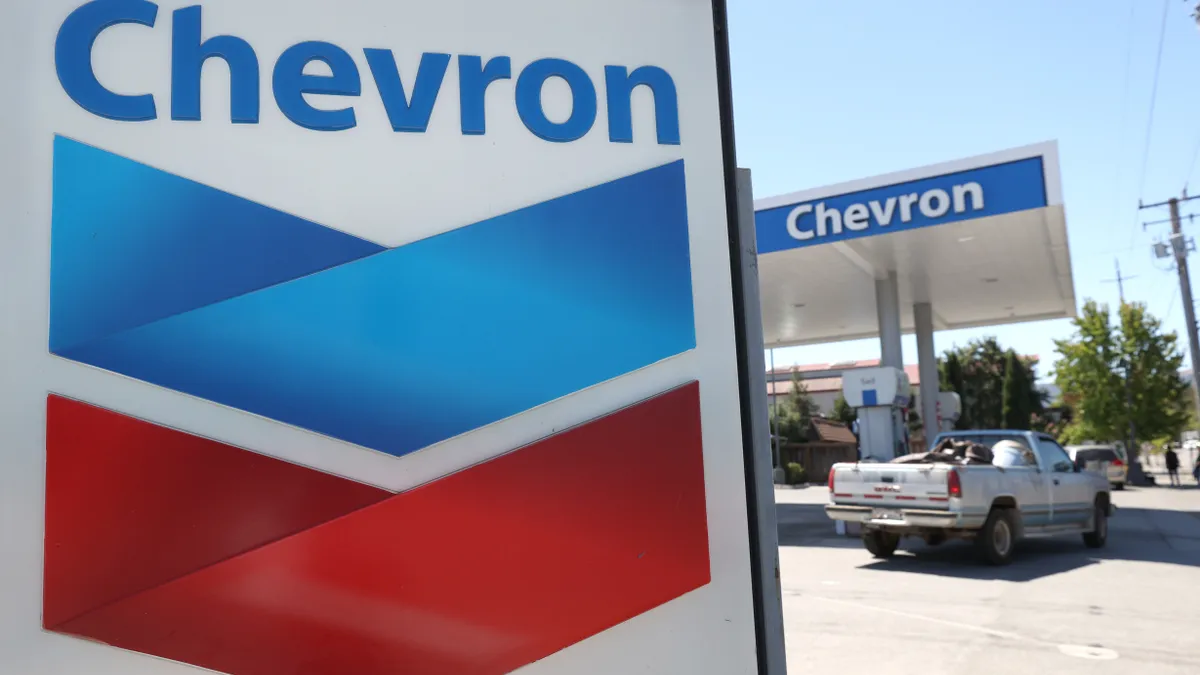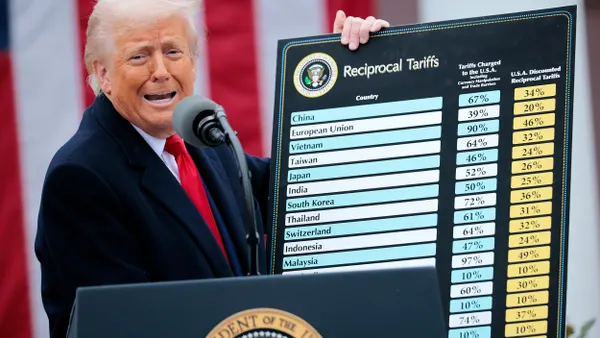Dive Brief:
- Chevron said Tuesday it was writing off between $3.5 billion and $4 billion in assets as part of its 2023 fourth quarter finances, citing California’s regulatory landscape and an expectation to decommission previously sold assets in the Gulf of Mexico, according to a Securities and Exchange Commission filing.
- The San Ramon, California-based oil major said it expects to continue operating its California assets “for many years to come” despite the regulatory landscape. Last year, California Gov. Gavin Newsom signed a package of laws aimed at the oil industry shortly before announcing the state was suing Chevron, along with Exxon, Shell ConocoPhillips, BP and the American Petroleum Institute for “decades of deception” that had environmental and health consequences.
- Chevron also anticipates it will have to clean up assets it sold to companies that have since filed for Chapter 11 bankruptcy and expects to undertake the decommissioning activities on these assets over the next decade.
Dive Insight:
Chevron said “continuing regulatory challenges” in California led to the company adjusting down its future investment levels and altering business plans for the state that also helms its principal executive offices. Currently, Chevron produces approximately 75,000 barrels of oil per day in Central California, according to the company’s website.
"California's policies have made Chevron's investments in its home state riskier than investing in other states," Andy Walz, president of products at Chevron said in public comments posted to the California Energy Commission's website last month. Walz also added that the company had reduced spending in California by hundreds of millions of dollars since 2022 as California’s policies made it a difficult place to invest, leading Chevron to reject capital projects in the state.
The state of California also became the largest global economy to endorse a call for the non-proliferation of fossil fuels in September, signing on to a global proposal backed by the World Health Organization. Additionally, the state previously passed the Advanced Clean Cars Act II, which will require all new cars, trucks and SUVs sold in the state to be zero emission vehicles by 2035.
New oil well approvals in California state cratered last year, with just seven being approved by July 2023, after approving more than 200 in the same time period in 2022. The state also created an independent watchdog to watch oil prices in the state daily and spot price gouging by producers.
“For more than 50 years, Big Oil has been lying to us,” Newsom said when announcing the lawsuit. “California taxpayers shouldn’t have to foot the bill. California is taking action to hold big polluters accountable.”
As far as its Gulf of Mexico assets, Chevron said in its filing it is “probable and estimable” that responsibility for winding down some of the previously sold assets will revert back to the company. As the still solvent prior operator of those assets, Chevron will likely legally be required to decommission those abandoned assets, a process it expects to take more than a decade.
Oil and gas operators are legally required to plug abandoned wells, stemming from regulations in the Safe Drinking Water Act of 1974 that led to stricter state regulations on plugging wells, according to a 2011 National Petroleum Council report. The Environmental Defense Fund estimates there are more than 120,000 orphaned wells in the U.S. with no solvent owner of record, and the Department of Interior estimates millions of Americans live within a mile of an abandoned coal mine or an orphaned oil or gas well.
















